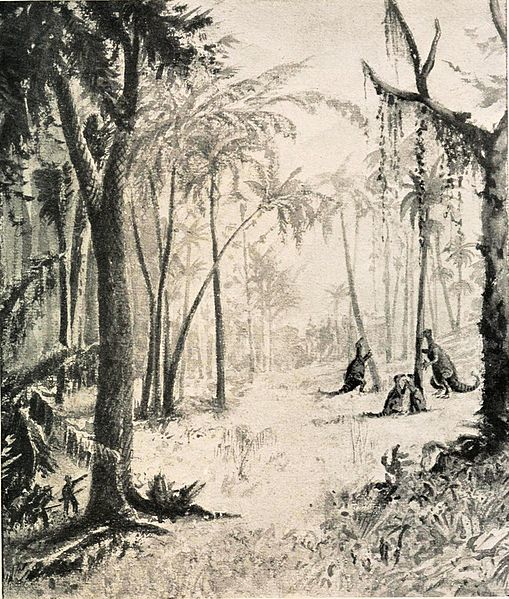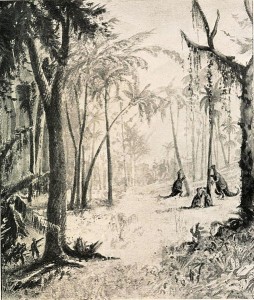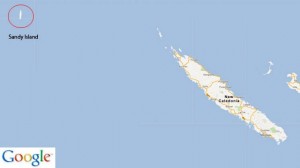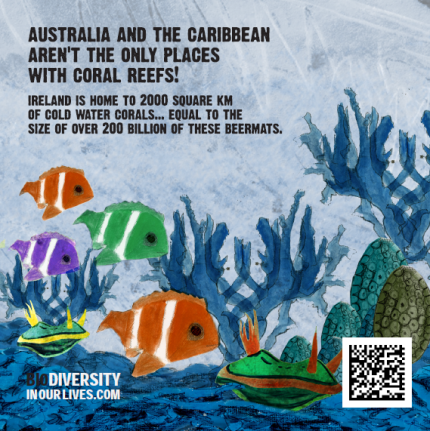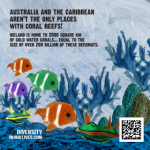
With the end of the year and the inevitable onslaught of re-edited best of 2012 countdown shows, I decided to join the year’s long nostalgic trip with a look at some of my favourite scientific discoveries of 2012. As the obvious breakthroughs such as the Higgs boson etc will be covered ad lib elsewhere I decided to stick to topics more closely related to my field and in line with the blog. So here’s my short and erratic list, enjoy.
- As a region that is less explored then the surface of the moon, especially after the success of the ebb and flow gravity mapping satellites, deep sea environments show no slowing down in throwing up new discoveries and 2012 was no different. While James Cameron has stolen all the headlines with his record setting trip to the ocean floor, it’s the discovery of a new hydrothermal vent community in Antarctica that makes my list. The Vent system, an ecosystem supported based on bacteria that chemosynthesis and obtains its energy independently of the sun, was found to include a new species of yeti crab and an assemblage of species markedly different from other vent systems. The discovery of the new systems and its marked difference to other vent systems may help us further understand the biogeography and the dispersion and colonisation of such isolated and extreme environments.
- Amongst the fantastic successes in space exploration this year included the mapping of the moons surface, the discovery of evidence of water on the asteroid Vesta by Dawn and of course the landing of the mars rover Curiosity. However perhaps one of the most unexpected discoveries of the year came from the most inhospitable of planets Mercury. Despite being the closest planet to the sun were temperatures can reach a searing 400 degrees Celsius at the surface the Nasa found evidence of water and organic compounds at the bottom of a crater near the poles, which is permanently shaded. While life would not be expected to be found in such an inhospitable location it points to the ubiquitous presence of water ice and organic materials throughout the solar systems, a pre-requisite for life on this planet.
- With an estimated 86% of the earths species awaiting to be discovered, 2012’s batch didn’t fail to disappoint. Amongst the most notable new species to science include two new species of monkey (Cercopithecus lomamiensis the first to be found in Africa in 28 years and Nycticebus kayan a venomous slow Loris found in Borneo), the smallest know reptile, the largest fossil penguin species and the 126 new species found in Mekong basin just to name a few. Also worth nothing, although not a new species, is the spade toothed beaked whale skeleton, a species yet to be seen in the wild, which no evidence of its existence was known for 30 years.
- While probably not the most talked about scientific advancement of the year, a paper in Nature by Sugihara et al explaining a method of unravelling causation was one of the most talked about in this department. The statistical procedure called convergent cross mapping can determine cause and effect problem in complex data such as fisheries population dynamics, a problem that so often pains ecologists. While a statistic method doesn’t usually get the excitement levels up but this method will likely provide numerous insights into ecological systems in the future.
- To counter balance including a statistical paper in my festive highlights of the year I decided to include the several instances of what seems to be reverse Doolittleism, animals trying to speak back to us. While parrots ands primates are usually the mainstay of investigating language, it was a beluga whale and an elephant that caught the ears of scientists this year. Noc, a captive beluga whale in the marine mammal foundation in San Diego was reported to have produced such a convincing human voice that handlers in the water surfaced to say “Who told me to get?”. Furthermore the whale was trained to speak on cue by using much lower sound waves than the normal high click sounds of beluga whales. A second incident of an animal attempting to mimic human language was Koshik, a male elephant in Everland theme park in Yongin, South Korea. Koshik can imitate words such as “annyong” (“hello”), “anja” (“sit down”), “aniya” (“no”) and “choah” (“good”). While other animals have been known to imitate human language, the addition of such large charismatic animals that are both intelligent and also unknown to normally imitate sounds, such as birds do, may be an important input into the evolution of vocal learning.
That’s my list of my favourite discoveries of 2012, which is by no means comprehensive, for example take a look at the wiki page of science in 2012 for a day-by-day list of the best discoveries of the year. Lets hope for the same in 2013.
Author
Kevin Healy: healyke[at]tcd.ie
Photo credit
wikimedia commons


